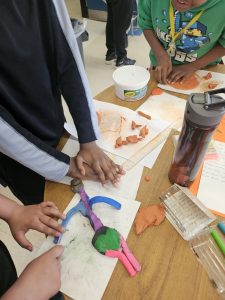At the end of May, I had the opportunity to attend a “Language Friendly School” conference in Hamilton. It was hosted at Glendale Secondary School, as it is the latest school in Canada to achieve this designation. There are member schools around the globe, however, including The Netherlands, Suriname, China, Germany, the UK, and others. I was particularly excited to attend this conference at Glendale, as it is the eventual destination of many students I support across the system.
I have walked these halls many times, touring with excited grade 8s and their families, and have seen the many ways both teachers and students embrace, use, and celebrate multiple languages in learning. It is not dissimilar to many elementary schools I visit, which are quite “language friendly” themselves!
The official designation of “Language Friendly School”, however, is a distinguished one. According to its website, “the Language Friendly School is both a label and a global network of schools that embrace and value all the languages spoken by their students … they actively foster an environment where these languages thrive within the school community.”
Two guest speakers from this organization presented at our conference, and discussed all the reasons why including multiple languages in schools is critical for student learning and well-being. They were the ones we are all familiar with: that students learn faster and better in their first language; that language is an inseparable part of identity, and to exclude it from the classroom is to in many ways exclude students themselves; that multilingualism benefits everyone, not just students learning English; and that first language maintenance is essential not only for strong English acquisition, but also for the vital connection to family and culture, to say nothing of future education and employment opportunities.
The presentation was full of celebratory speeches, examples of students’ multilingual learning and what a Language Friendly school looks like, as well as a moving multilingual performance by the Glendale school choir. Yet there were somber moments as well. Perhaps one of the most impactful occurred during the slide presentation, when a quote attributed to a former principal at Silver Creek Public School in Mississauga appeared on the screen:
“I went into school with two languages. I left with one. This is the exact opposite of what education should do: it should add things, not take away things.”
And there it is. This statement, in its stark simplicity, is a devastating reminder of what can happen out of sight, out of anyone’s notice, when we use only English in our schools.
Perhaps this is why the Language Friendly Schools website has a similarly brief yet poignant objective:
Language as a resource.
Language as a right.
A right, indeed. Language is who we are. To exclude it, consciously or unconsciously, from the school environment is antithetical to our most sacred duties as teachers.
(On happier note, the above school, Silver Creek Elementary in Mississauga, is also designated a Language Friendly School.)
I look forward to detailing in subsequent blogs all the ways in which the elementary schools I support are language friendly. For now I will leave you with a quote that was lovingly scrawled in colourful chalk in one of the classrooms at Glendale:
Language is the blood of the soul, into which thoughts run and out of which they grow.
– Oliver Wendell Holmes

